At precisely 4 o’clock, Alan Krashesky arrives, as he does each weekday afternoon, in the makeup room of ABC 7 Eyewitness News. In this squat cubby adjoining the station’s ground-level State Street television studio, he completes his transformation from mere human to radiant newsman, the primary anchor of three of Chicago’s top-rated evening newscasts, the trusted, abiding, affable, and telegenic source of the day’s most essential information in the nation’s third-largest market.
Krashesky’s ascent to the heights of Chicago anchordom has been — much like the man himself — steady, unassuming, and patient. So you’re forgiven if it seems rather improbable that in the history of the city’s television news only a select few boldface names have had an on-air career as long as Krashesky’s. Even fewer can lay claim to as lengthy a run on a single station: He’s been a constant on ABC-7 for 37 years. (The only more stable presence among active Chicago TV news figures is weather god Tom Skilling, whose forecasts have appeared on WGN since 1978.)
“Alan is the last great news anchor in Chicago,” longtime local media reporter Robert Feder says. “But we don’t think of him the same way that we think of some of his flashier predecessors in the business. Bill Kurtis and Walter Jacobson and the great anchors of their era, they wore their celebrity on their sleeves. They were in the news as much for what they did outside of the newsroom as for what they did inside it. Alan’s never done that. He’s kept his head down and done his work.”
True to form, on this day Krashesky has his head down, his mind on work. “I know this makeup stop may seem a little unusual,” he says apologetically in his preternatural broadcast-ready baritone, which adds gravitas to even the most run-of-the-mill statements. “But when you do it every doggone day, it’s like brushing your teeth.” Chalk it up to his unfailingly courtly comportment, his lifelong Christian faith, or some deep-seated fear of accidentally blurting out an obscenity live on Disney-owned airwaves, but the 58-year-old steers clear of all vulgarisms, even in casual conversation. He opts instead for neutered, 1950s-ish expressions and intensifiers such as “doggone,” “gosh,” and “holy cow,” all uttered without a hint of irony.
“What the heck is going on?” Krashesky exclaims, his features hardening into an expression of concern and incredulity, the very same one he displays on the air when reacting to a particularly grim report. A television set is always within eyeshot at the station, and the one hanging above the vanity mirror in the makeup room carries the 4 p.m. newscast, which he anchored before his 2016 promotion to the top job: anchoring the 5 and 10 p.m. broadcasts, as well as the 6 o’clock he already helmed. Onscreen, Krashesky’s replacement, Rob Elgas, brings word of the mysterious deaths of a handful of vacationers at a resort in the Dominican Republic. The story grabs Krashesky’s attention, as he’s an avid world traveler; just two days earlier, in fact, he’d returned to work after a multicity jaunt across Italy with his wife of 37 years and their three adult children (and one son-in-law), and ABC has dispatched him to Rome to cover the papal beat so many times that he’s become friendly with a waiter at a little café that serves his favorite rigatoni. “What is it? Poisoning from beverages? Gosh, and it happened so fast — as fast as a cyanide killing or something like that. It’s like, holy cow!”
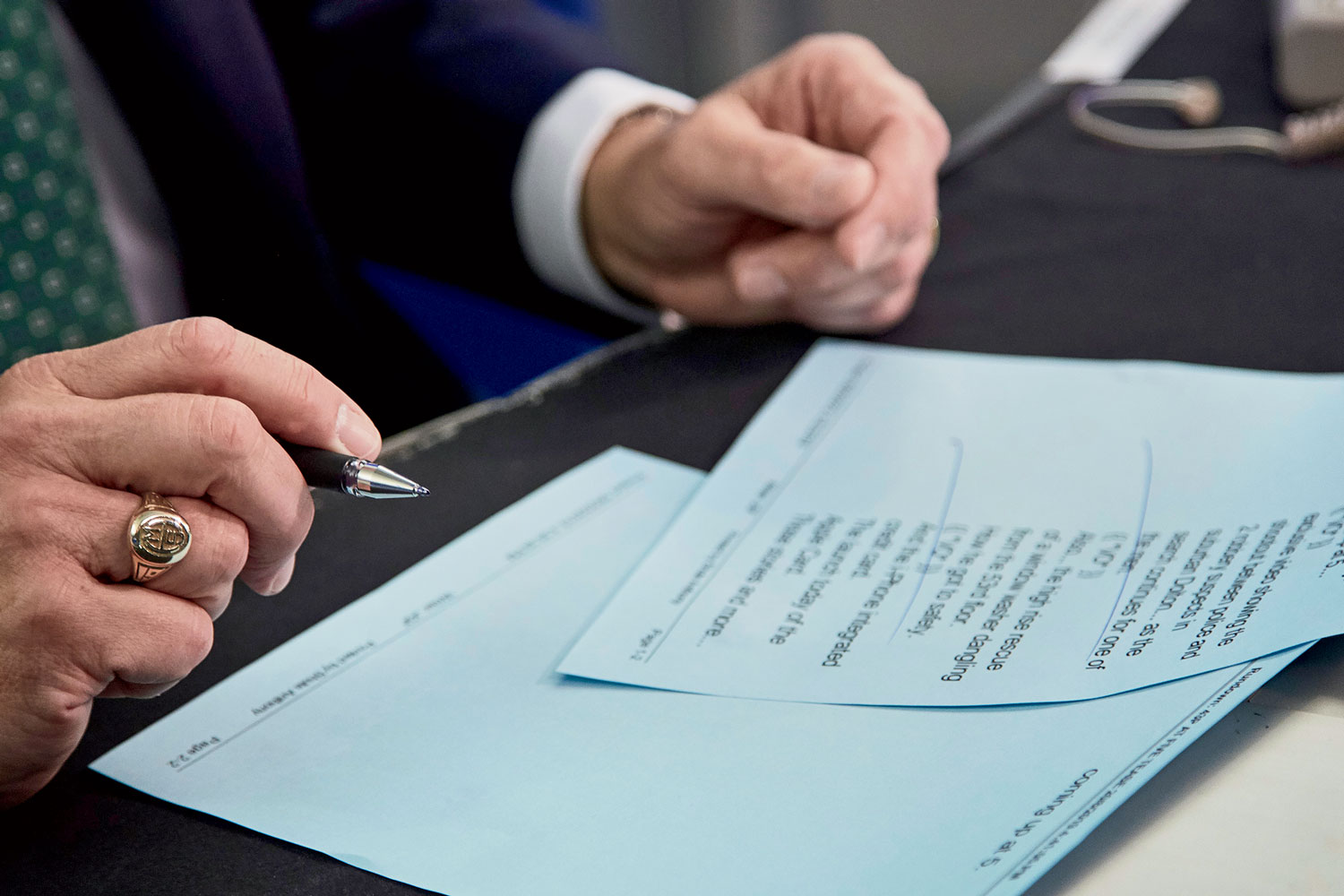
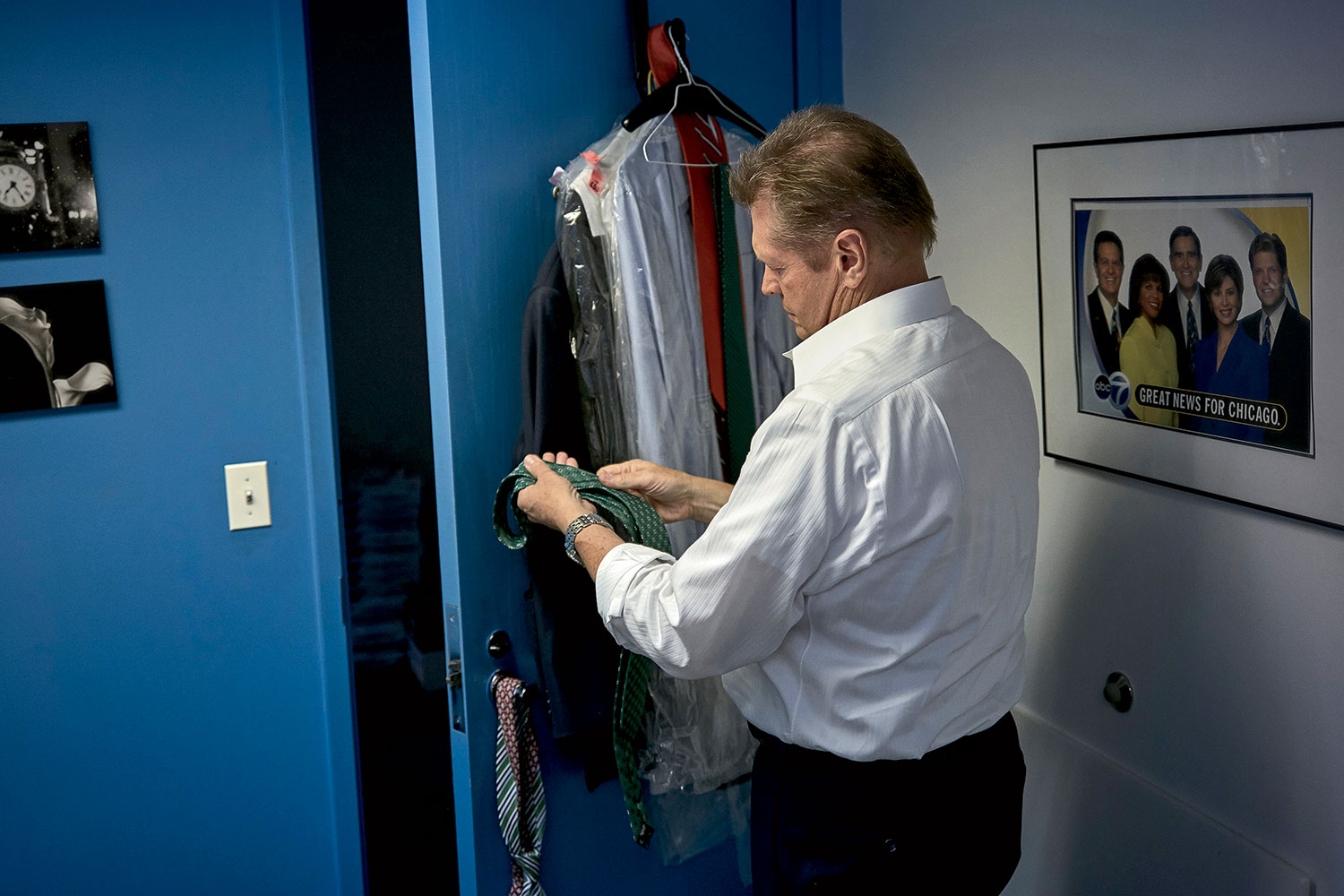



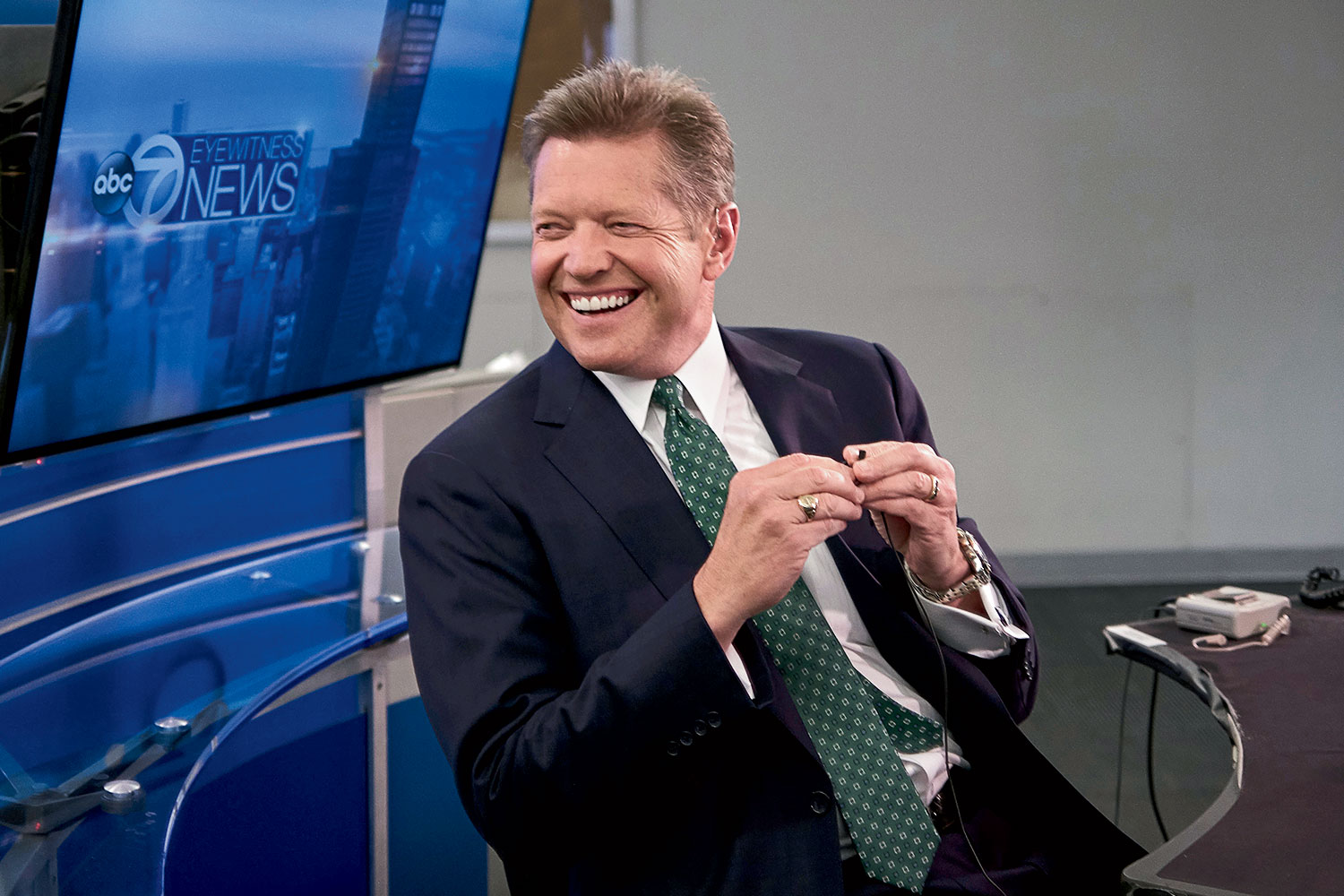
He flips up the crisp white collar of his dress shirt and drapes his tie around his neck. The light blue of the silk matches his wide-set eyes and the polished face of the cufflinks that secure his French cuffs, monogrammed with his initials. He knots his tie and slides the vise-tight fist of fabric toward his throat until it docks seamlessly against the top button of his shirt. Just then a diminutive woman named Alx (pronounced like Alex), the lively makeup artist on duty this afternoon, calls out from the other side of the wall: “Alan, I’m ready for you!”
“Alx works magic,” Krashesky says, flashing his white enamel as he takes a seat in the salon-style chair. She wraps a black nylon cape around him to protect his clothing. Onto a palette she smears a glob of foundation that matches Krashesky’s skin tone. She collects it with a wedge-shaped sponge and dabs it rapidly atop the fissures and furrows that spread across Krashesky’s unadorned face — his crow’s feet, his laugh lines. During his early years at ABC-7, where he was hired as a general assignment reporter at the remarkably young age of 21, Krashesky had the opposite problem; he was so self-conscious about his youthfulness that he begged now-retired weatherman Jerry Taft not to disclose his age, out of fear he would lose credibility.
Watching Krashesky in the makeup room, you wouldn’t think that after nearly four decades behind the news desk, this dapper anchor still privately chafes at the show business aspects of broadcast news — the greasepaint, the wardrobe, the stagecraft, the celebrity — that threaten to take away time and attention from the journalism. “The aesthetic part of the job I don’t really think about very much,” he says. All those impeccably tailored suits? Merely “part of the uniform.”
On his commute from Naperville, Krashesky will often spot himself — alongside his 10 p.m. colleagues, Cheryl Burton, Mark Giangreco, and Cheryl Scott — on a digital billboard beaming an ad for ABC 7 Eyewitness News and cringe. “I don’t think you ever get used to that,” he says. “I don’t, anyway.” On occasion he’s hopped into the back of a cab, only to catch his own image on a screen playing ABC-7’s “taxi-cast,” a separate newscast taped daily and fed into vehicles around the city. When it’s noted that visitors to the station’s second-floor offices are greeted by a poster with his smiling face by the elevators, Krashesky deadpans, “Frightening, isn’t it?”
For her final trick, the makeup artist fires up a silver airbrush and sprays on a layer of skin-toned liquid, concealing Krashesky’s freckles, age spots, and all other remaining blemishes. Then he rises from the chair, grabs a brush, and gives his golden brown hair a couple of quick backward swipes for a freshly windblown look. He buttons his coat and pauses for a moment to consider his professional image in the mirror. He looks, at last, every bit the handsome, authoritative figure hundreds of thousands of viewers in Chicago and beyond invite into their homes five days a week to dispense truth. He looks, as Krashesky himself might say, doggone perfect.
The goal is perfection,” Krashesky says of his approach to the job. “That bar doesn’t move. We’re constantly striving to reach it every day.”
In turn, Krashesky’s colleagues have affectionately weaponized his idealism, ribbing him for his general saintliness and his all-around nice-guy persona. “Alan — or, as we like to refer to him at ABC, Mr. Perfect” is how Giangreco introduced Krashesky at a May luncheon honoring him with a Dante Award, bestowed annually by the Joint Civic Committee of Italian Americans on a member of the Chicago media who heeds poet Dante Alighieri’s call to be “no timid friend to truth.” “We look forward to ‘The Krash Chronicles,’ ” the sports anchor continued, referring to the family Christmas card, “basically a collage of photos and maps and all these wonderful images detailing their vacations. And what I mean by ‘vacations’ is, ‘Let’s go to a Third World country and help those in need.’ ”
Burton follows Krashesky in the makeup chair and immediately begins waggishly overpraising her coanchor. “I always say if he doesn’t want to do this anymore, he could run for office!”
“Oh, and what office would that be?” Krashesky asks, smiling tentatively.
“Mayor of his town! Governor of the state! President of the United States! Oh, and father and grandpa of the year!”
Krashesky covers his face, shielding himself from the onslaught of compliments, then comically staggers out of the room. As it happens, the Illinois Fatherhood Initiative already named him one of its Father of the Year honorees, in 1998. It was a mixed blessing: “I can’t tell you how many times in my own house someone would say, ‘Eh, some father of the year.’ ”
“We were together for more than a quarter of a century. We never had a fight,” recalls Kathy Brock, Krashesky’s coanchor in various time slots before her retirement in 2018. Musing on how much she misses working alongside Krashesky moves Brock to tears. As a retirement present, Krashesky and his wife set up and funded a scholarship in Brock’s name at her high school alma mater in Pasco, Washington, awarded to a student aspiring to study journalism. “I mean,” says Brock, still stunned by the gesture, “that’s way better than a watch.”
Makeup finished, Krashesky is now doing his final preparations for the 5 p.m. broadcast in ABC’s clamorous third-floor newsroom above the studio. Police scanner chatter and a legion of televisions blare in the background. Producers and assignment editors and copywriters speak hurriedly in mystifying shorthand. As part of his process prior to all the broadcasts he helms, Krashesky meticulously scrutinizes scripts in a software program called Dalet. “I like to know what’s going on,” he says, “almost to the point where if I had no script in front of me, if I had no teleprompter, I would be able to intelligently tell the story.” He combs with an eagle eye through the copy, looking for problems with grammar, spelling, and sentence structure, something he has done as a matter of habit since he worked one summer long ago as a proofreader for a typography company. Sure enough, he catches some not-insignificant errors. A story about teens robbing pedestrians in Streeterville, for instance, mentions a white or gray vehicle with tinted windows as the suspects’ “getaway care.” Another piece, this one about allegations of animal abuse at a dairy farm in Newton County, Indiana, places the farm in Newtown County. “It’s just a minor thing,” he says, “but it’s the kind of thing that, if not corrected, could be repeated.”
He also uses this prebroadcast period to familiarize himself with the emotional cadences of the day’s stories. “Think about what you’re saying,” Krashesky often advises. “Think about why a viewer would care about the story.” Only then, he believes, can an anchor begin to connect to an audience, conveying the news as a compassionate human rather than a detached script reader. He can spot the fakes within minutes of tuning in — the anchors who employ the same tone for a homicide story as for a sunny weekend weather forecast.
“Let’s talk about Marlen Ochoa-Lopez,” he says of the pregnant 19-year-old who was found strangled to death in April, her baby cut from her womb. “I get a chill as I mention her name. How the heck can you report that story and not in some way just be touched to your core? It’s not just a news story.”
Observes his wife, Colleen, formerly a childbirth nurse at Advocate Good Samaritan Hospital in Downers Grove: “People say, ‘Well, the nice thing is, he doesn’t have to bring his work home with him.’ Who are you kidding? When he was in Puerto Rico after the hurricane, he would call me and just cry his eyes out from the devastation he was seeing.”
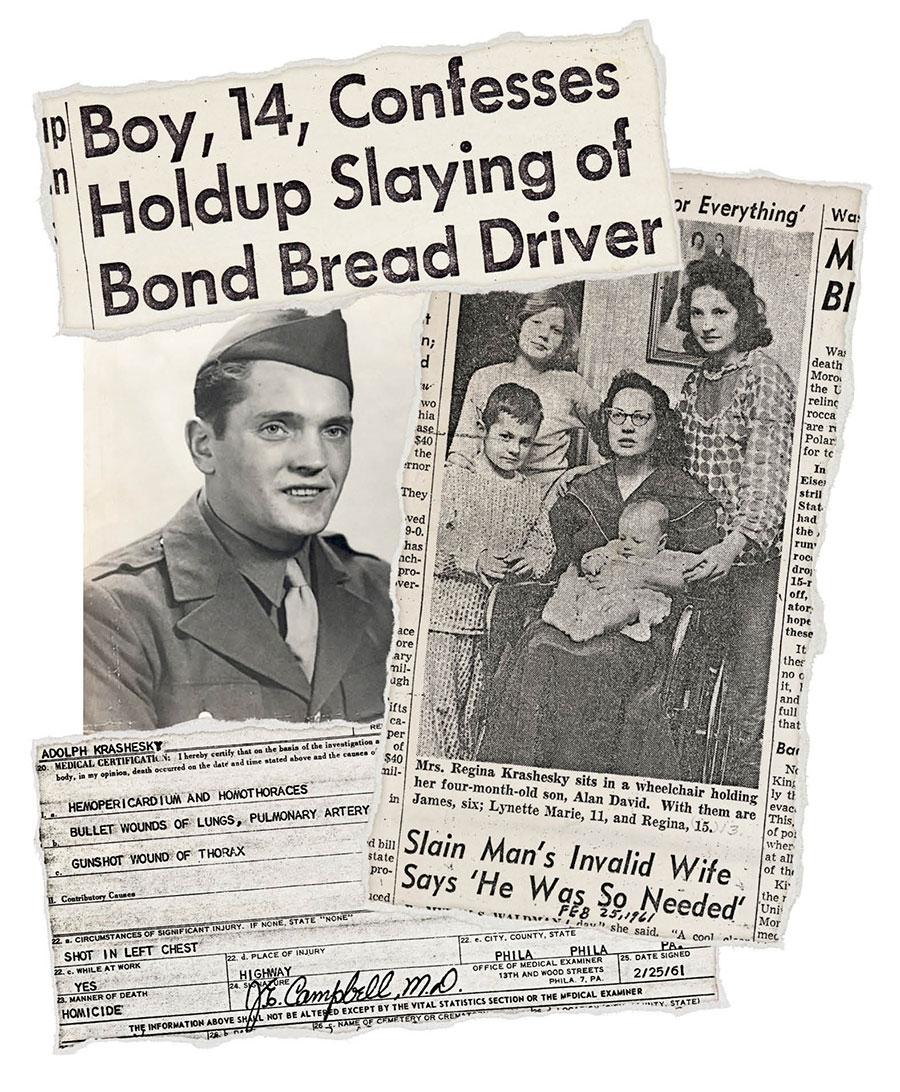
One item in today’s 6 p.m. broadcast tugs with particular force at Krashesky’s heartstrings. A man has been found guilty of killing a mother of three at a family party in Morgan Park on Mother’s Day weekend five years ago. According to the police, she was not the intended target. “Just a momentary flash of the impact of something like that on somebody’s life, that’s stored in here and up here,” he says, pointing to his heart and head. “That takes me there for that moment as I’m thinking about …” He clears the lump from his throat. “I’m sorry.”
The uncomfortable thought that has caused the momentary failure of his great instrument is something very few of the viewers who watch him night after night know anything about: the murder of his father. In 1961, Adolph Krashesky was shot and killed in an apparent robbery while making his rounds delivering bread in Philadelphia, leaving behind a young wife and four children, including 4-month-old Alan.
“These, unfortunately, are the kinds of stories that we hear about in Chicago on an all-too-frequent basis,” he told the audience at the Dante Award luncheon. “Growing up, I was made keenly aware of the impact violent crime has in tearing families apart. It tears them apart suddenly, emotionally, financially — and it tears them apart permanently. And that reality, quite frankly, is with me every single day when we have to report stories like that one.” That is why Krashesky’s highest broadcast ambition — beyond presenting a news report that’s accurate, informative, and entertaining — is to cultivate a relationship with the viewer. “If you’re going to have to hear bad news,” he explains, “maybe it’s better to hear it from a friend.”
The worst news of Krashesky’s life — the news that would tear his own family apart — came not from a friend but from a police officer.
In his office, he hands me a flash drive full of newspaper clippings that his late mother had collected about his father’s murder. The ramifications of the incident shaped Krashesky’s life from nearly its start. Still, he will tell you he’s paid perhaps not enough attention to the news accounts of it, the investigation, and the complex judicial saga that followed — a surprising admission from a veteran journalist who prides himself on always being well informed.
It seems to be the one story he can’t bear to explore. And it’s one he rarely talks about. In fact, he’s never before spoken about his father’s murder at length with a reporter. “Honestly, at some point,” he says a bit shamefully, “you’re going to know more about that case than maybe I do.”
On the evening of February 25, 1961, Adolph Krashesky, a 38-year-old driver and salesman for Bond Bread Bakeries, was filling in for a coworker, as he frequently did, making deliveries and collecting bills. Around 6 p.m., he stopped at a residence in West Philadelphia to collect a bill and then returned to his truck. That’s when he was shot once in the back. He was rushed to the hospital, where he was pronounced dead.
Two children from the neighborhood said they had witnessed the shooting; however, their accounts yielded no solid leads or suspects. The police presumed robbery as the motive and so were surprised to discover more than $250 in cash and checks in Adolph’s pockets. They began to suspect he may have been killed for refusing a robber’s demands.
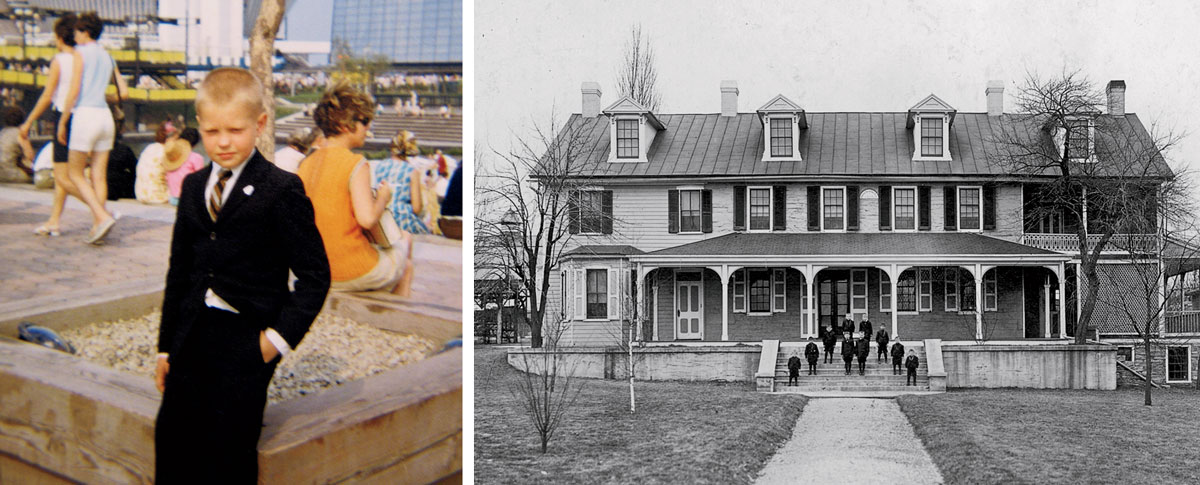
Detectives dispatched to the Krashesky residence, a classic Philly row house on Smedley Street on the north side of town, found his 35-year-old wife, Regina, temporarily wheelchair-bound from a pelvic injury related to childbirth. (Newspaper reports invariably described her as an “invalid.”) They asked Regina if her husband of nearly 16 years had ever before encountered robbers while on the job. Indeed, he had, she told them. Just a few weeks before he was killed, Adolph informed Regina that while on a route in West Philadelphia he had “slapped” someone trying to rob him. An assistant sales manager at Bond Bread’s West Philadelphia plant related to a reporter something Adolph, a World War II veteran who stood nearly six feet tall and weighed 190 pounds, had once said to him: “The only way anybody will get my money is to kill me.”
“We always worked hard for everything,” Regina told the Philadelphia Bulletin. “It’s ironic that he was killed by someone who wanted something for nothing.” The newspaper took a photo of the Krasheskys shortly after Adolph’s murder. Regina, seated in the wheelchair, is holding baby Alan. They’re surrounded by his 6-year-old brother, James, and teenage sisters, Lynette and Regina. The look of trepidation on the widow’s face conveys the disorientation of a woman beginning to confront the uncertain future as a suddenly single parent.
“I’ve wondered about this: What was it like in that household?” Krashesky says. “I’m a 4-month-old baby in that house. I can’t even imagine what it’s like to care for that child when your whole world has been blown up around you and you’ve still got three other kids. My mother was out of her mind — out of her mind — with grief. She felt that she was robbed of the life she had with him. She was devastated beyond repair when he was killed. She never recovered from that.”
Once a vibrant person, Regina became subdued and quiet after Adolph’s death and suffered bouts of depression. “She was in a bad way,” recalls Regina’s 79-year-old brother, Walter Janusky, a former state trooper who lives in Mount Carmel, Pennsylvania. “I can’t find all the horrible words to describe it. It was beyond awful.”
In early May 1961, more than two months after Adolph’s murder, the police made what seemed to be a momentous break in the case. Officers in the Philadelphia suburb of Lansdowne arrested two 14-year-old boys, Lincoln Tabb and Moses McDuffie, as well as an 18-year-old. The three Philly teens led the police on a four-mile chase from Lansdowne to the suburb of Upper Darby in a stolen car. Officers fired 11 bullets at the vehicle before it careened off the road and collided with a telephone pole.
During questioning, the police told reporters, Tabb admitted to attempting to hold up a store in his neighborhood and for some reason referred to it as “the Bond Bread job.” That slip of the tongue, police said, led Tabb and McDuffie to confess to taking part in the murder of Adolph Krashesky. Newspapers ran photos of the two teens alongside breathless accounts of how Tabb had pecked out an admission on a typewriter with one wrist handcuffed to his chair. “Boy Types Confession in Bread Man Killing” blared the front-page headline of the Philadelphia Inquirer on May 8, 1961. Tabb’s short statement began: “It all start when I want some money to buy me something to wear. I was going to rob not ‘KILL.’ I did not mean to let go of hammer I AM SORRY I TOOK THAT MAN LIFE. If I could bring back that man life I would.” The Inquirer reported that Tabb and McDuffie had initially targeted an insurance agent to stick up that evening, but when he failed to show, the teens resolved to rob Adolph instead. A search of the West Philadelphia home where Tabb lived with his mother reportedly turned up a “zip gun” — a crude but functional firearm cobbled together using a toy gun, tape, and rubber bands — that investigators believed to be the murder weapon.
McDuffie was never tried, but Tabb was prosecuted for first-degree murder. Regina attended the trial, which lasted just eight days in November 1962. “She wanted justice. It became an obsession for her,” Krashesky says. “But she was never going to get justice, because her husband was not coming back.” The jury found Tabb guilty of second-degree murder, which carried a maximum sentence of 10 to 20 years. But Tabb’s lawyer, Philadelphia defense attorney and prominent civil rights leader Cecil B. Moore, filed a motion for a new trial, precipitating a lengthy battle in the courts.
The state’s case against Tabb hinged on what Moore believed to be a false confession. He argued that the juvenile had been deprived of food and sleep, as well as what the Pennsylvania Supreme Court later called “the assistance or counsel of a friendly adult.” A 1963 hearing concluded that Tabb’s statements to the police should not have been brought up in front of a jury. Eventually, a new trial was ordered, and in 1971, a decade after Adolph’s murder, Tabb was this time found not guilty.
“That killed her,” Krashesky says of his mother. “That the people that she personally felt were responsible for taking her husband’s life got off — it drove her crazy.”
Long before the judicial roller coaster snuffed out Regina Krashesky’s faith in the legal system, her husband’s murder had put immense strain on the family. When Alan was 4 years old, Regina packed him in the family car for the two-hour drive to Hershey, Pennsylvania. She had made the difficult decision to enroll him at the Milton Hershey School, a boarding school where he would receive a free education through 12th grade. Founded in 1909 by chocolate magnate Milton S. Hershey, the home and school first catered to orphan boys and later, when Krashesky was there, to boys “socially orphaned” due to poverty or other circumstances. (Today the institution is coeducational.) “She realized,” Krashesky says, “that she just didn’t have the wherewithal to adequately care for me anymore.”
He still remembers being dropped off at “a ranch-style home where I didn’t know anybody.” His mother had dressed him in a seersucker outfit. Shortly after his arrival, he would find those clothes shredded inside a bin of rags. As a child, he didn’t know why those tatters were such a devastating discovery; now he understands that they symbolized the life he had known rent asunder. “I was incredibly homesick,” Krashesky recalls of his earliest days at Hershey. But because he was a new student, he was not allowed to see his mother for three months. When Regina was finally able to visit, she was saddened to hear her son refer to her impersonally as “ma’am.”
“It was tough for her,” Janusky says of his sister’s decision. “She had gone through a lot. It was a whole combination of things — her finances, her health, worries about her children.” Krashesky’s older brother was already enrolled at another boarding school in Philadelphia that welcomed children from single-parent, low-income families. He would later join Alan at Hershey.
“My goodness, I’ve never, ever faulted her for making the decisions she made,” Krashesky says. “It was not a selfish decision at all. It was looking out for my best interests — even though, as a kid, I may not have seen it that way at the time. And there were certainly times where I’m like, ‘Oh jeez, just take me home!’ Because the school itself is — how can I put this? Well, it’s not home. There’s still a longing, of course, for what could have been, I think, which is to be in a more traditional, normal environment, growing up with a family, you know?”
Each of Hershey’s student homes typically housed 16 boys and was overseen by a parent couple. The environment was one of order and discipline. Students were assigned chores based on age. They scrubbed toilets, vacuumed carpets, dusted furniture, helped prepare meals, washed dishes. Nearly every aspect of daily life was regulated, from what the boys wore to when they ate.
“Everybody who was there was there with a sad story, and a lot of us, including myself, had a bad attitude about it. It’s really easy to feel like, My parents dumped me here. My parents didn’t want me,” says Larry Jackson, who met Krashesky after he arrived at the school in 1972, when the two started seventh grade, and came to know his friend by the nickname Krash. Jackson’s father, a drill sergeant at Fort Dix during the Vietnam War, died young, and his mother, like Krashesky’s, felt Hershey was the best option for her son. “I thought my mother hated me and that I must be a real loser and she needed to get rid of me. Krash never, ever had that. His attitude was, I’m here, I’m going to make the best of it. This could set me up for my future if I take advantage of everything that’s been offered.”
Louise Swartzbaugh, who taught second grade at Hershey, recalls 7-year-old Alan as “a very bright little boy”: “He was certainly not a troublemaker. He was very cooperative and the ideal student you want in your classroom.” One day Swartzbaugh observed him drawing intricate, beautiful airplanes, as he often did in his free time, and he informed his teacher that he wanted to be a pilot. “When you’re a pilot,” she told him, “I want you to come right back here and take me for a ride in your airplane.” In 1998, 20 years after Krashesky had graduated from Hershey, Swartzbaugh received a letter from him. He explained that he had not become a pilot but he still wanted her to go for an airplane ride. Enclosed was a check made out for enough to get her to London, a city she had always wanted to visit. “I sat there,” she says, “and I cried.”
The Hershey campus included multiple dairy farms. “You would wake up in the morning and you’d scrape down the manure lot, feed the cows, take care of the calves, and load the hay in the summertime. And, of course, milk the cows,” Krashesky recalls. “I hated it. Hated it.” He leapt at an opportunity to get out of the barnyard drudgery. Hershey students in the jazz band or glee club lived in a house removed from the farm. Krashesky managed his sophomore year to make both groups, on the strength of his promise as a saxophonist and his phenomenal baritone.
During spring break, the glee club toured the Northeast by bus, playing concerts at school assemblies and staying with the locals. On a stop in the small town of Dushore, Pennsylvania, Krashesky was assigned to the house of a girl named Cathy who was on the high school student council that had organized the concert. Cathy’s best friend was Colleen Merritt. Krashesky and Colleen had an easy rapport. He thought she was “adorably cute.” She, in turn, was impressed by his “amazing manners.” At the concert, when members of the glee club dispersed into the aisles to engage the audience during the song “Hi, Neighbor,” Krashesky singled out Colleen (he still remembers her peach dress) and sang to her. After the show, Krashesky bumped into her and Cathy in the hallway. He asked for Cathy’s address, then boarded the bus out of town. Colleen was bummed. But not long after, Krashesky sent Cathy a thank-you note. In it, he asked for Colleen’s address. The first of Krashesky’s many letters to Colleen was 10 handwritten pages, front and back. They eventually began dating and would marry in 1982.
“Colleen’s family was so outgoing toward Alan, and he basically became, pretty early on, long before they ever married, a part of her family,” Jackson recalls. “Colleen’s father, Ray, treated Alan the same as he would any of his kids, and that really helped Alan adapt to a more normal life.”
Colleen agrees. “I don’t know if he knew what he was missing before,” she says, “but I think once he became a part of my family and saw our tight bond, he realized.”
Throughout his 13 years at Hershey, his mother maintained regular contact with him and would visit monthly, as often as the school allowed. “She would take me out and we’d go to dinner,” Krashesky says. “So it wasn’t like I had no communication.” During the summer, the school gave students a month of leave, which could be taken piecemeal or all at once. Because Regina was working, usually in a company’s payroll department, her son would often spend that time with her back at home. Occasionally, they would take trips. When Alan was 12, his mother took him and his brother on a 15-day trip across Europe, to England, France, Switzerland, and Italy. “She had joys in her life,” Krashesky says. “She, in many ways, put within me the desire to travel.”
As he matured, Krashesky grew curious about his father, a man he knew only through photos and family stories. He also became more interested in the circumstances surrounding his death and the particulars of the legal case. “My mother didn’t have an easy time talking about it. She would not believe anything that could be questioned about the case,” Krashesky says. “When I did talk to her about it, it always seemed to go in a circle, an angry, angry circle that she couldn’t escape from. Doggone it, I wish she could have. I wish that somebody that she met and had a relationship with could have lifted her out of that. It was like a dark cloud. And it hung with her her entire life.” Regina had romantic relationships through the years but did not remarry. She died in 2001 of complications from Alzheimer’s disease. “She never got over it. She never got over him,” Colleen says. “She remained bitter about it until the day she died.”
As a high schooler, Krashesky had shown interest in journalism. He wrote for the school magazine and served as a yearbook editor. He was also active in theater and had been told his voice would be well suited to radio, a medium for which he had a deep fondness. High school students at Hershey were allowed to listen to their radios before bed. “In the summertime, the AM waves would skip over the atmosphere,” he recalls. “And as I was dialing around, I could get Chicago, so I could listen to WCFL broadcasting from Marina City. They would say, ‘From Marina City in Chicago!’ Chicago was far, far away. I’d never been there in my life. I just remember thinking, This is so cool. I was bizarrely enamored with how somebody somewhere can be speaking on radio or television and it winds up in people’s homes instantly.” He smiles. “It’s magical.”
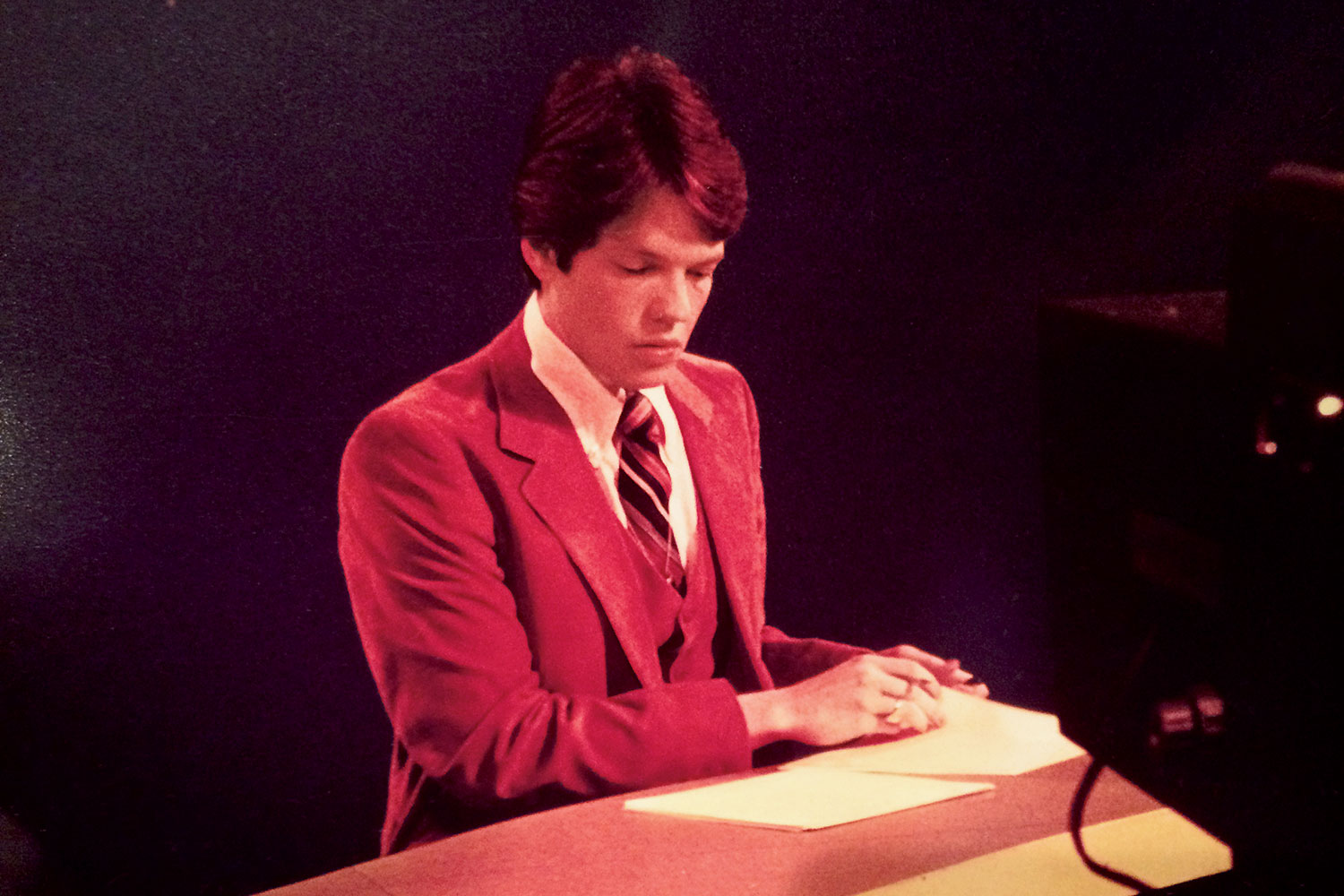
A family friend told him about a newspaper article he read about a journalist who had attended Ithaca College in upstate New York. Krashesky enrolled, studying communications and spending much of his free time working for the school’s radio and TV stations. Out to get as much experience as possible, he did whatever was needed, whenever it was needed. He served as an anchor, a reporter, a talk show host, a disc jockey, an overnight host.
During his final year in college, he heard that a station in Binghamton, New York, had an opening for a weekend sports anchor. No great sports enthusiast, Krashesky nonetheless decided to make the hour drive to interview at WBNG-TV. A classmate who was widely known to be a sports nut also intended to make the trip, but he had car trouble. “I swear he would’ve gotten that job,” Krashesky says. “It’s only because my car worked that day that I got it.” At WBNG, he would give the sports report, then head to the opposite end of the studio set to do the weather. If he knew little about sports, he knew even less about meteorology. But the gig taught him that there are times as a journalist that “you’re forced to learn about a topic that you may not have any expertise in or, in some cases, a great deal of interest in.”
After about a year, Krashesky took a job in Austin, Texas, at KTBC-TV. He was hired, based on his weather experience, as the station’s forecaster. “When I got down there, they said, ‘Are you interested in doing this full time?’ I said, ‘Oh, not really.’ ” He wanted to be chasing news stories. Krashesky’s boss gave him the option of doing general assignment reporting during the week and weather on the weekends. The situation wasn’t ideal, but he saw it as a steppingstone. Nine months later, he began work at WLS-TV in Chicago.
Better than anywhere else, Krashesky’s office tells the story of his work, and his life, over the past 37 years. To get there, you walk by the sports reporters’ suite, with its obligatory Nerf hoop. You breeze through the employee kitchen, where Krashesky nibbles on yogurt and fruit, because he prefers not to anchor on a full stomach. Then you pass the small “W” flag that flies whenever ABC-7’s 10 o’clock broadcast beats its competition in the coveted 25-to-54-year-old demographic (the flag flies virtually in perpetuity). Finally, you walk down a hallway, past the bright and stylish digs of Judy Hsu, Krashesky’s bright and stylish 6 p.m. coanchor. If you arrive at the Batcave-like weather center — where Cheryl Scott presides over a staggering number of radar displays and color-coded maps and other meteorological whatsits — you’ve gone too far.
Tonight ABC will broadcast the third game of the NBA Finals, delaying the start of the 10 o’clock news by an hour. The programming change gives Krashesky an unusually long stretch between newscasts to hang out and chat over a couple of cans of Key lime LaCroix from his office minifridge.
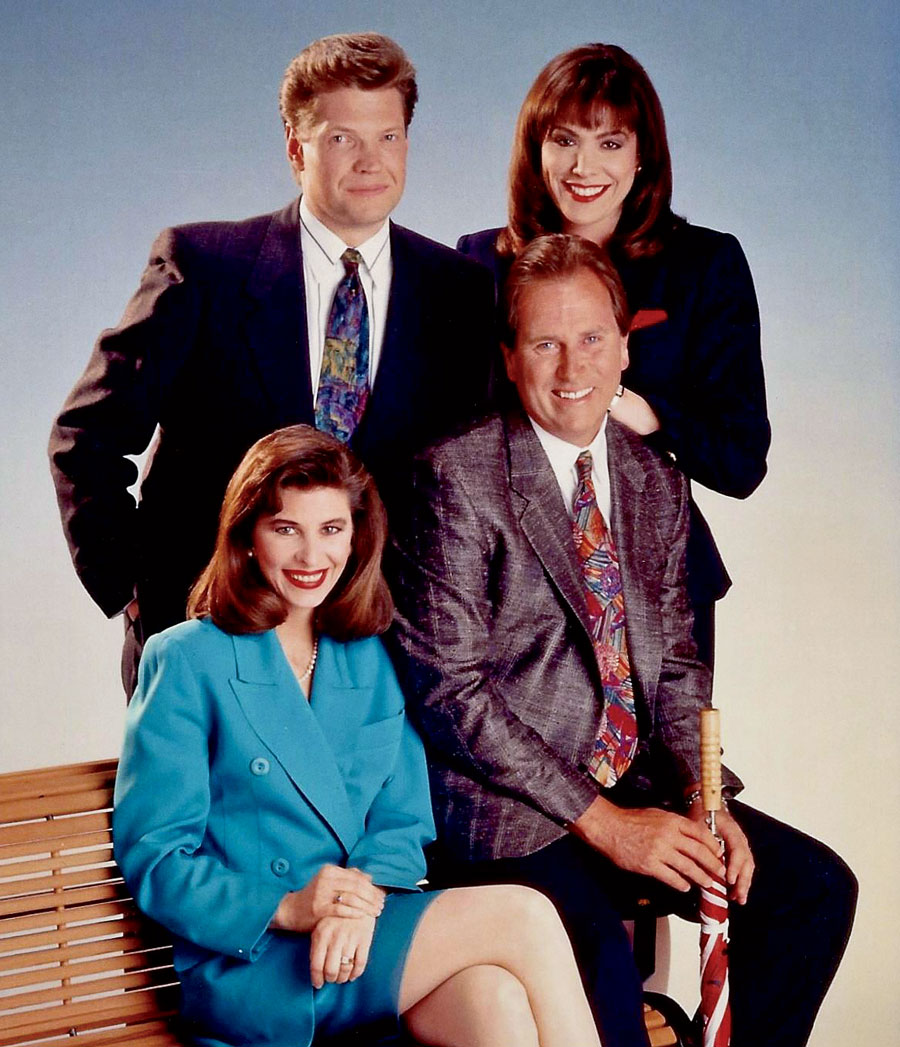
“Here we are all these years later and I’m sitting in an office a block and a half from Marina City, the building where those radio broadcasts were originating when I was in high school,” he says. “The astonishing part is that you suddenly look around and say to yourself, Wait a minute, aren’t I still the young guy who was trying to make a dent in this thing?”
On the floor in front of his standing desk, which faces two computer screens and three wall-mounted televisions, sits a cardboard box marked “Krash Tapes”: his library of résumé tapes. Somewhere deep in the pile of Betacam videocassettes is the one that helped land him the job in Chicago, bringing him and his new wife from Austin to a city he had never even visited.
His first day — which, he will tell you from memory, was October 4, 1982 — the 21-year-old was sent to the scene of a school bus accident along with two other men, one dressed casually and the other in a suit. Krashesky assumed they were a cameraman and a reporter and that he was going along to shadow them, as a way of getting a feel for how things were done at a big-city news operation. When they arrived, he quickly realized that the two were a soundman and an uncommonly sharp-dressed cameraman. “Oh crap,” he remembers thinking. “I’m the reporter!” That evening, the new kid in town reported live, with legendary ABC-7 anchors Joel Daly and Fahey Flynn tossing to him. Among the many pieces of treasured ephemera pinned to the bulletin board in Krashesky’s office is a card that came appended to the bottle of Bailey’s Irish Cream that Flynn sent him for Christmas in 1982. The note reads simply: “Thanks for all your help.”
A couple of tapes in Krashesky’s collection contain the five-minute local news briefs (“cut-ins,” in industry parlance) he anchored that ran during Good Morning America from the mid-’80s to the mid-’90s. For the final segment, Krashesky would chat with an up-and-comer named Oprah Winfrey, who previewed the topics she’d be covering on A.M. Chicago, the program that was eventually rebranded The Oprah Winfrey Show.
On April 3, 1989, Krashesky, at 28, became the first anchor of Eyewitness News This Morning, ABC-7’s original weekday breakfast-time newscast — a then-untested format that has since become a profitable standby for every major station in the market. (Colleen would often hear the same remark from regular viewers: “I wake up with your husband.” Her riposte: “So do I. What a coincidence!”) Also behind the desk for the half hour were weatherman Jerry Taft and traffic reporter Roz Varon.
In 1990, the station’s general manager, Joe Ahern, called Krashesky into his office. “Congratulations, you’re getting married,” he told him, then popped in the résumé tape of a young anchor named Kathy Brock, whom he’d hired from Salt Lake City to cohost the morning broadcast. The Chicago Tribune’s Rick Kogan commented on the show in a 1991 piece about local morning TV: “It is solid, workmanlike. But it is simply no fun.” The quote is still attached to Krashesky’s bulletin board and makes him chuckle to this day.
After finishing his morning anchoring gig, Krashesky would hustle out into the field, where he displayed skill covering complex stories. In his early years, he contributed pieces on everything from the hate-filled Council Wars and Harold Washington’s death to the fan hysteria surrounding Payton’s Bears and Jordan’s Bulls. Hanging in his office is a Wiley Miller cartoon of a group of journalists beginning their morning by throwing a dart at a board full of disparate subjects — car repair, aerospace, bioengineering, bondage, septic tanks, liposuction — that they must become experts on that day. This intellectually omnivorous approach has been a guiding light throughout his career.
The far corner of Krashesky’s desk is dominated by a small army of pope bobbleheads, memorabilia from the decades he’s spent reporting on the Roman Catholic Church. (His parents were Catholic, but Krashesky now attends Naperville’s Community Christian Church, whose services he describes as “kind of a rocking environment.”) He began covering the Catholic beat at ABC-7 in the early ’90s, around the time a former seminarian accused Cardinal Joseph Bernardin of sexually abusing him in the ’70s. (The man later recanted.)
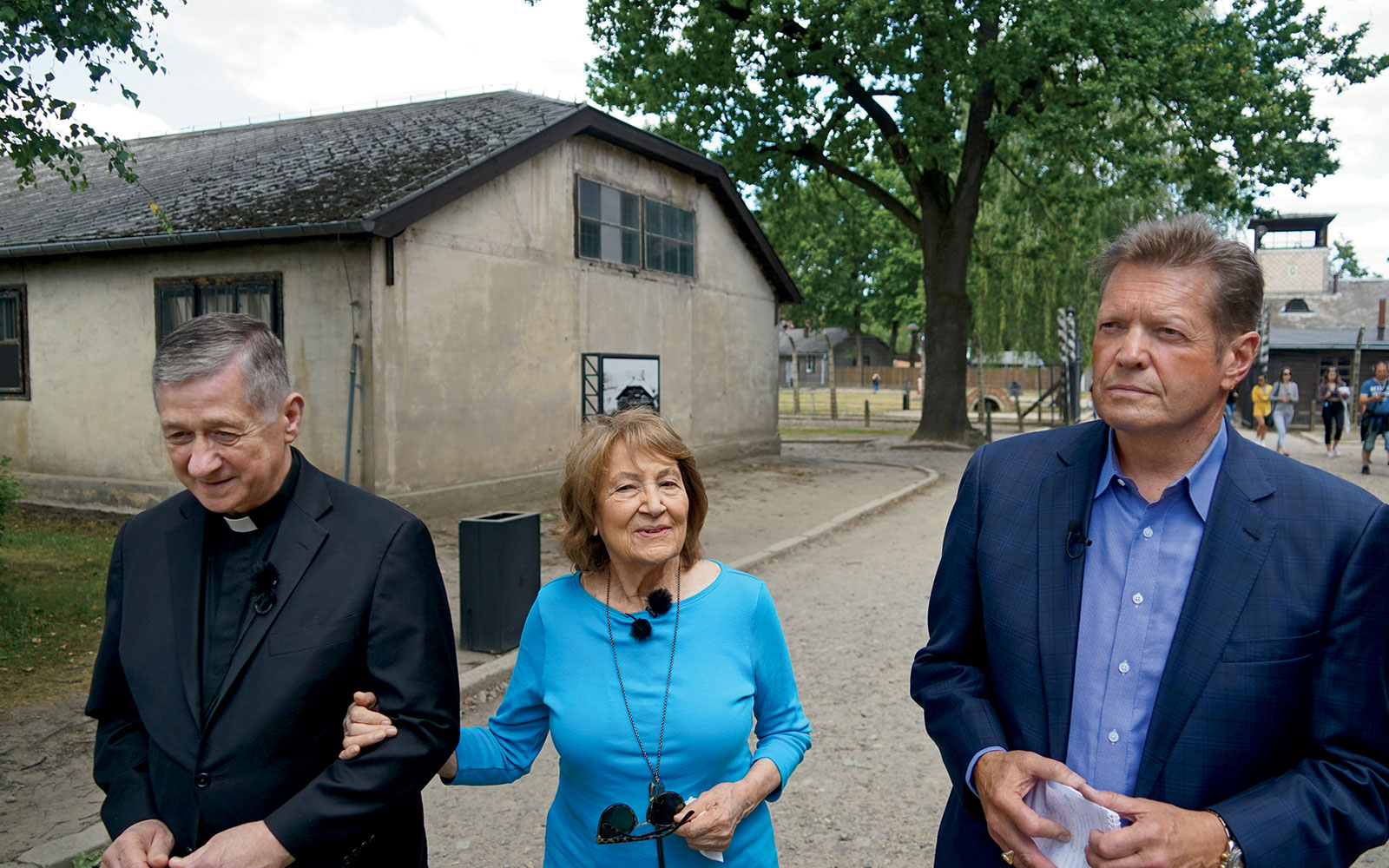
The lamp is strewn with press badges related to Krashesky’s travels: to Israel and the West Bank for Bernardin’s interfaith pilgrimage in 1995; to northern Italy for Bernardin’s last visit to see his family before his 1996 death from pancreatic cancer; to Vatican City for the 2005 funeral of Pope John Paul II and the 2005 and 2013 conclaves that elected Pope Benedict XVI and Pope Francis; to the Auschwitz death camp, where in July he and Cardinal Blase Cupich accompanied the 90-year-old board president of the Illinois Holocaust Museum on what she believed would be her final trip to the place she was imprisoned as a teenager.
At times in the ’90s, Krashesky had pangs to leave local news and advance to network, to see what he could do on the national stage. One evening, over dinner at John Drury’s home in Wheaton, he sought the veteran broadcaster’s counsel. He recalls Drury’s advice: “Alan, just be careful of what you’re wishing for here. It’s a totally different life to be working for the network news operation. Your life is so much more inconsistent. You’re going to get the call at 2 o’clock in the morning and you’re going to be on an airplane to Brazil and you won’t know when you’re coming back. They will own you, your time, and your life. And if you’re willing to do that, and if you enjoy that, then good. But if you’re thinking that you want a stable marriage and want to see your kids frequently, it may not be the best choice.” Krashesky soon rededicated himself to ABC-7. At a breakfast meeting at the Palmer House, Ahern asked him what he wanted to do. “I told him flat out, ‘I want to be your primary anchor.’ ”
A framed photo perched on his desk shows the Krashesky clan smiling in front of a gorgeous natural landscape — water, mountains, sunshine. When Alan and Colleen started down the road to having a family, they struggled through infertility issues and a failed domestic adoption. They had called family and close friends to share the news that they had a son on the way — but then the birth mother had second thoughts. “I did not think I would ever get over being sad,” Colleen says. “I still have a little embroidered pillow with his name on it downstairs.”
Then came what Alan and Colleen call their miracle: their elder daughter, Kaylin, who was born in 1987, infertility issues be damned. (For a few years, Kaylin followed in her father’s footsteps as a morning anchor and reporter at stations in South Carolina and Oregon; she’s now the senior manager of media relations for the Alzheimer’s Association.) A story ABC-7 serendipitously broadcast about Chinese adoption led to the couple, after much paperwork, flying overseas in 1996 to meet and pick up their daughter Kiera. (She’s now an engineer at Google.) They adopted their son, Kian, from South Korea the following year. (He graduated from Columbia College last year and is pursuing a photography career.)
“This is the doggone picture of Kiera that we were handed whenever we got our referral,” says Krashesky, pointing at the photo of the doe-eyed little girl on the bulletin board. “I can’t imagine how you fall in love with a photograph, but I did in that moment.”

Having had a fatherless childhood, he was initially worried about becoming a parent. “He wasn’t sure,” Colleen says. “People who haven’t grown up with both parents can think, Wow, there’s not a manual on how to do this.”
On the wall behind Krashesky’s desk is a framed collage of photos of Hershey — the high school, the cafeteria, the auditorium. The images of his humble beginnings ground him — and remind him how far he has come, how unexpected his rise has been.
On his laptop, Krashesky pulls up a black-and-white photograph of his father in an army uniform. The resemblance is striking. “There is a picture of him with my mom in central Pennsylvania,” he says. “I would swear it’s me standing with her. It’s haunting.” He’s never been able to locate a photo of father and son together from the four months before Adolph was gunned down.
Asked if he thinks the teenagers arrested for his father’s killing were guilty and deserved to be locked up, Krashesky has only questions of his own to offer. “Was that confession legitimate? Were they forced to make it? Did that cop type it out?” he says. “Who knows what the heck happened?” He’s considered using his journalistic skills to suss out the answers. “I’ve thought about it over the years. I really have. I’ve thought about, Do I really want to look into this? Do I really want to dig in, find the people involved in the case, and ask them do they remember it?”
Those stones remain unturned, mainly out of a sense of self-preservation. “I think it may be some part of me protecting myself emotionally,” Krashesky says. He witnessed the quest for answers and justice consume and embitter his mother. He doesn’t want the same fate to befall him. “I think there’s just a much better use of time — lifetime, I mean. Whatever happened then happened, and I can’t change it. Maybe it’s that vague cloud that hangs over what really happened there that tells me that I may never know the truth. I don’t find the need to continue searching.”
That doesn’t mean his father’s murder is not on Krashesky’s mind each and every day. He will think of him during tonight’s 10 o’clock news, having once again donned the makeup and the suit and the expression of concern to tell Chicago about itself, about the fresh pain that has been wrought by the day’s violence. He knows from experience that this pain is not temporary, that it lingers forever, that it ripples across generations and does not end when he throws to the weather report. These are terrible things to comprehend before we lay our heads down to sleep. But if we’re going to have to hear bad news, doggone it, isn’t it better to hear it from a friend?



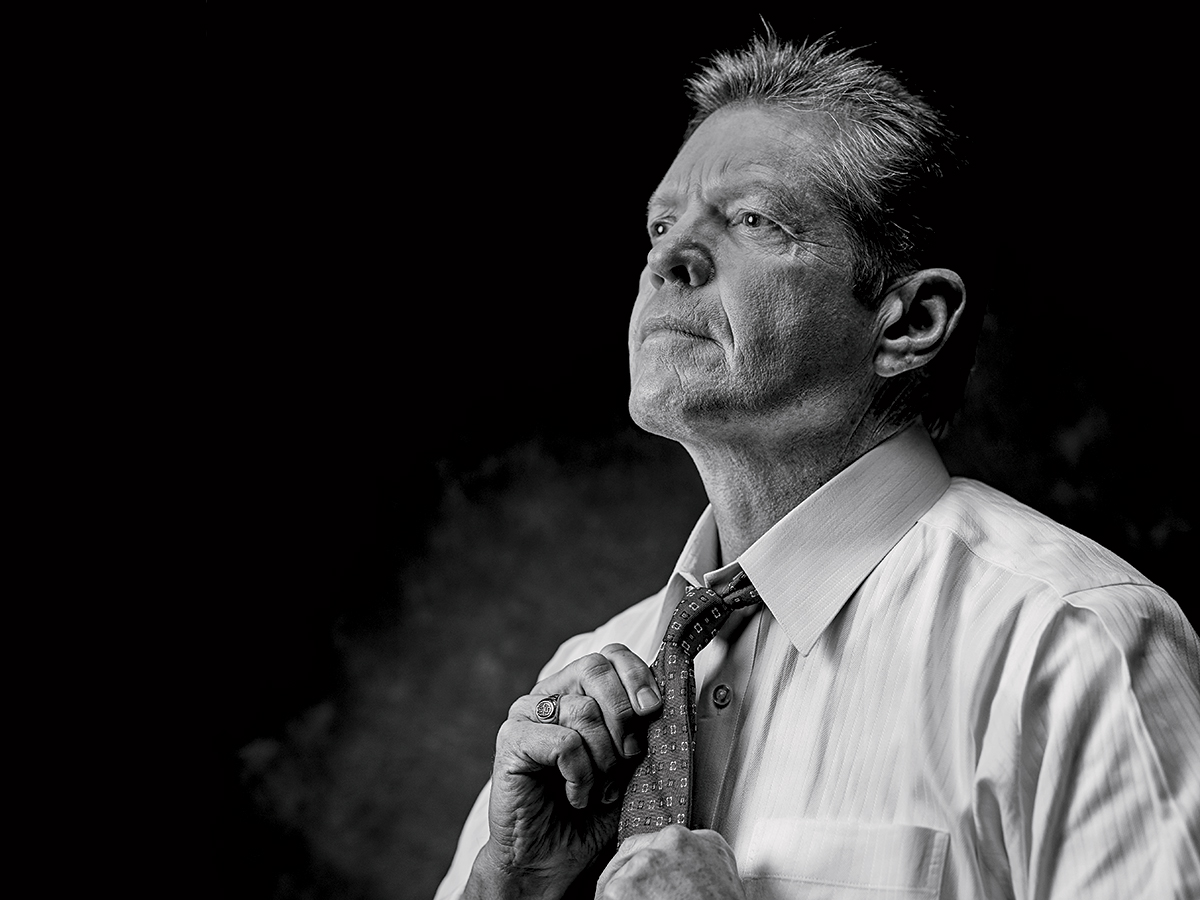
Comments are closed.